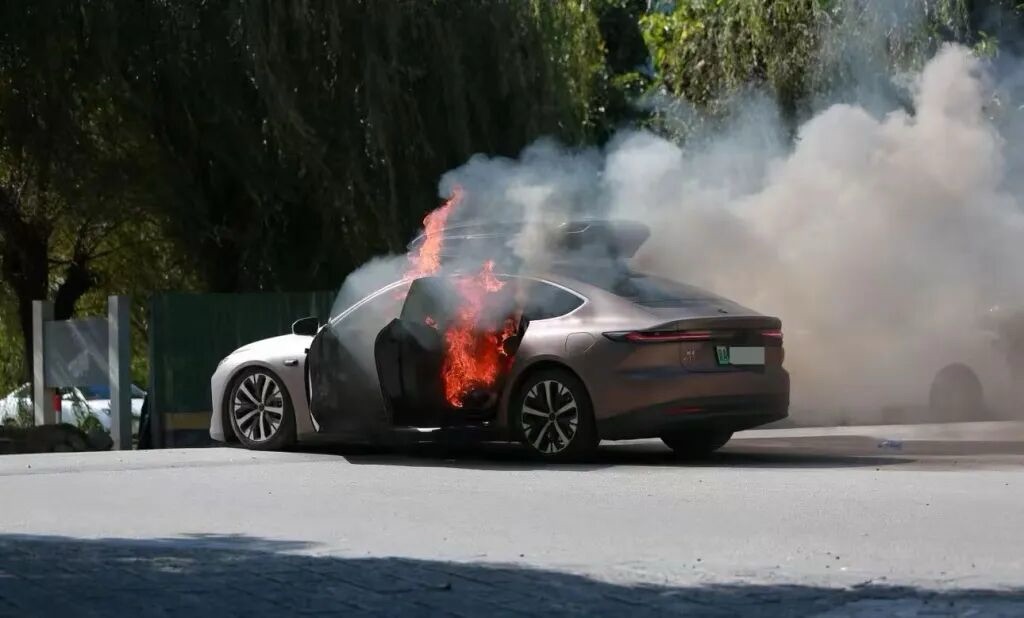新能源汽车起火事件频发:认知与技术鸿沟亟待跨越
今年10月,几起涉及知名品牌的电动汽车在高速行驶后发生起火事件,并迅速通过社交媒体传播,激起了公众对电动汽车安全的广泛关注。
尽管公众普遍认为电动汽车比传统燃油车更易起火,但全球的统计数据表明,电动汽车与燃油车的起火风险差异并不显著。据美国的统计数据,燃油车的起火事故数量甚至是电动汽车的数十倍。但由于电池起火的特殊性及其后果,问题的严重性也随之加剧。
为何电动汽车的起火问题引发了如此强烈的公众反应?主要是因为电池起火的机制和后果与燃油车大相径庭。电动汽车的电池包一旦发生热失控,内部化学反应几乎无法停止,且会释放大量有毒气体。特别是在封闭的停车场等空间内,起火不仅会影响车辆本身,更可能引发一系列的次生灾害。因此,尽管数据上电动汽车的起火概率并不高,但其带来的后果却更为严重。
近年来,随着电动汽车市场的快速增长,新能源汽车的安全性问题也愈发显著。尤其是在碰撞后的车门无法开启、电池包受损引发热失控等问题上,行业正面临前所未有的挑战。在解决这些问题的过程中,业界正在逐步加强技术保障体系,包括电池包的结构强化、热管理技术的提升,以及智能监控系统的广泛应用。而全固态电池的研发,也被视为彻底解决电动汽车起火问题的可能突破。与传统的液态电解质电池相比,全固态电池采用不燃的固态电解质,从根本上避免了电池包起火的风险。
新能源汽车的安全问题是一个系统性的工程,涉及电池设计、热管理、智能监控等多个层面。全固态电池虽然为未来提供了解决方案,但当前的安全保障依然依赖于电动汽车厂商和全球各国监管机构的共同努力。行业标准的完善、技术的创新与国际合作将成为推动电动汽车安全发展的关键。
In October this year, several electric vehicles (EVs) from well-known brands caught fire after high-speed driving incidents, quickly spreading through social media and triggering widespread public concern about the safety of electric vehicles.
Despite the general public perception that EVs are more prone to fires than traditional gasoline vehicles, global statistics indicate that the fire risk difference between EVs and gasoline cars is not significant. According to data from the United States, the number of fire incidents in gasoline cars is even several times greater than that in EVs. However, due to the unique nature of battery fires and their aftermath, the severity of the problem increases accordingly.
Why does the issue of EV fires provoke such a strong public reaction? The main reason lies in the distinct mechanism and consequences of battery fires compared to gasoline vehicle fires. When an EV’s battery pack undergoes thermal runaway, the internal chemical reaction is almost irreversible, releasing large amounts of toxic gases. In confined spaces such as underground parking lots, a fire can not only affect the vehicle itself but also trigger a series of secondary disasters. Therefore, while the fire probability in EVs may not be high, the consequences are far more severe.
In recent years, with the rapid growth of the EV market, safety concerns regarding new energy vehicles have become more prominent. Especially in issues like the inability to open doors after collisions and battery pack damage leading to thermal runaway, the industry is facing unprecedented challenges. In addressing these problems, the industry is gradually strengthening the safety system, including reinforcing the battery pack structure, improving thermal management technologies, and expanding the use of intelligent monitoring systems. The development of solid-state batteries is also seen as a potential breakthrough to completely solve the fire risk in electric vehicles. Compared to traditional liquid electrolyte batteries, solid-state batteries use non-flammable solid electrolytes, fundamentally eliminating the risk of battery fires.The safety of new energy vehicles is a systemic engineering challenge that involves battery design, thermal management, intelligent monitoring, and other aspects. Although solid-state batteries provide a solution for the future, current safety guarantees still rely on the joint efforts of EV manufacturers and global regulatory bodies. The improvement of industry standards, technological innovation, and international cooperation will be key to driving the safety development of electric vehicles.

